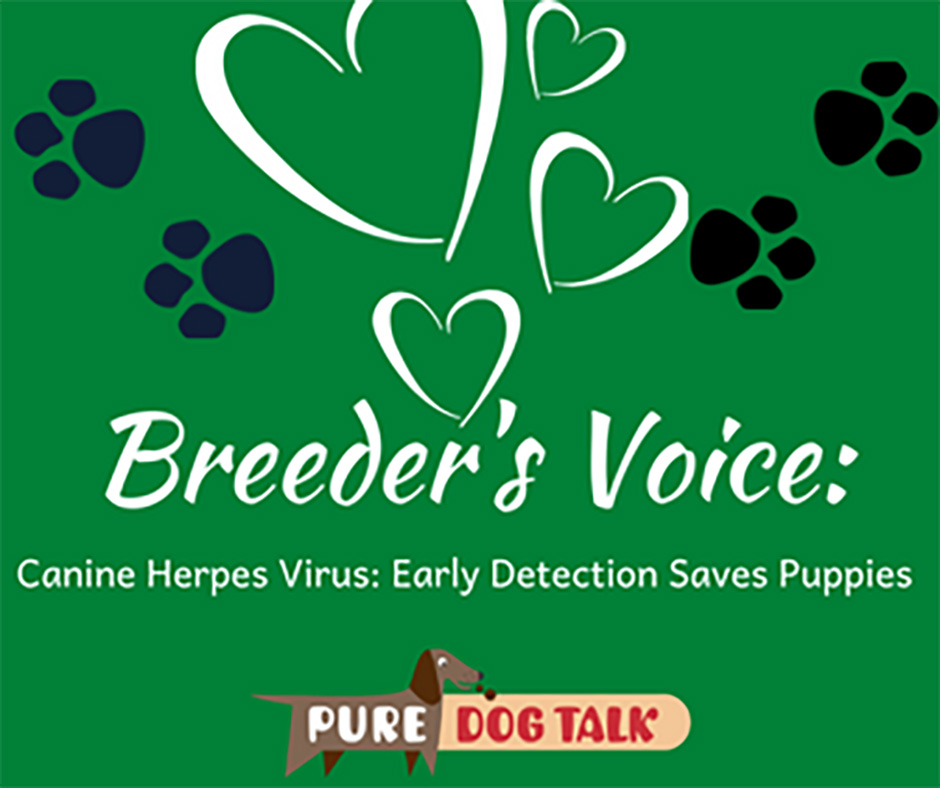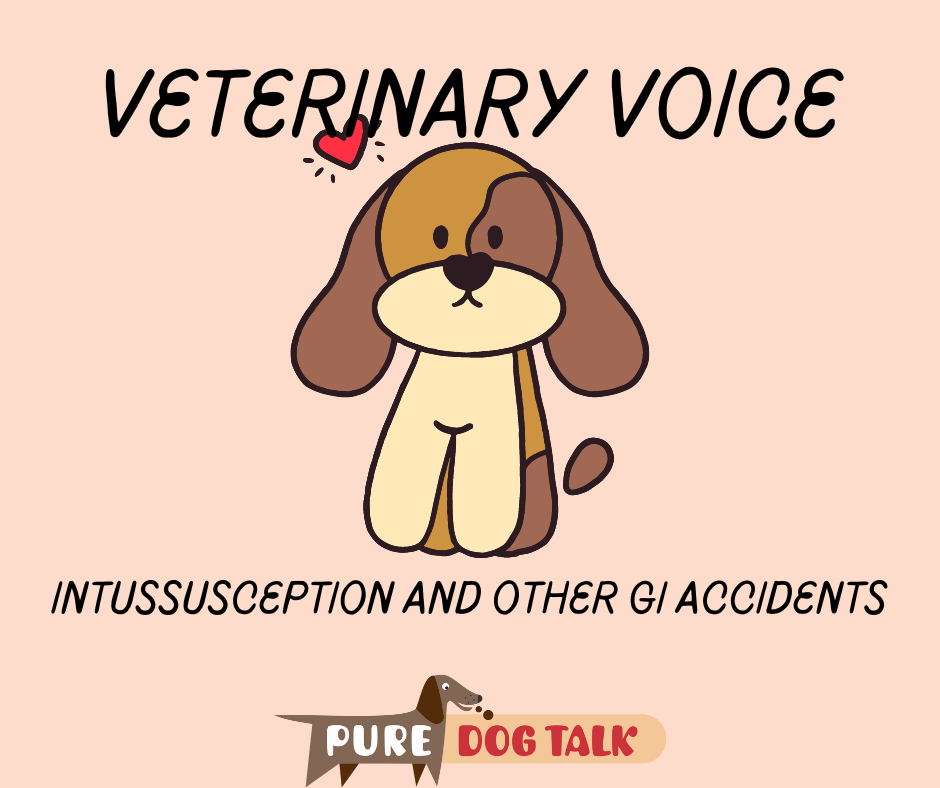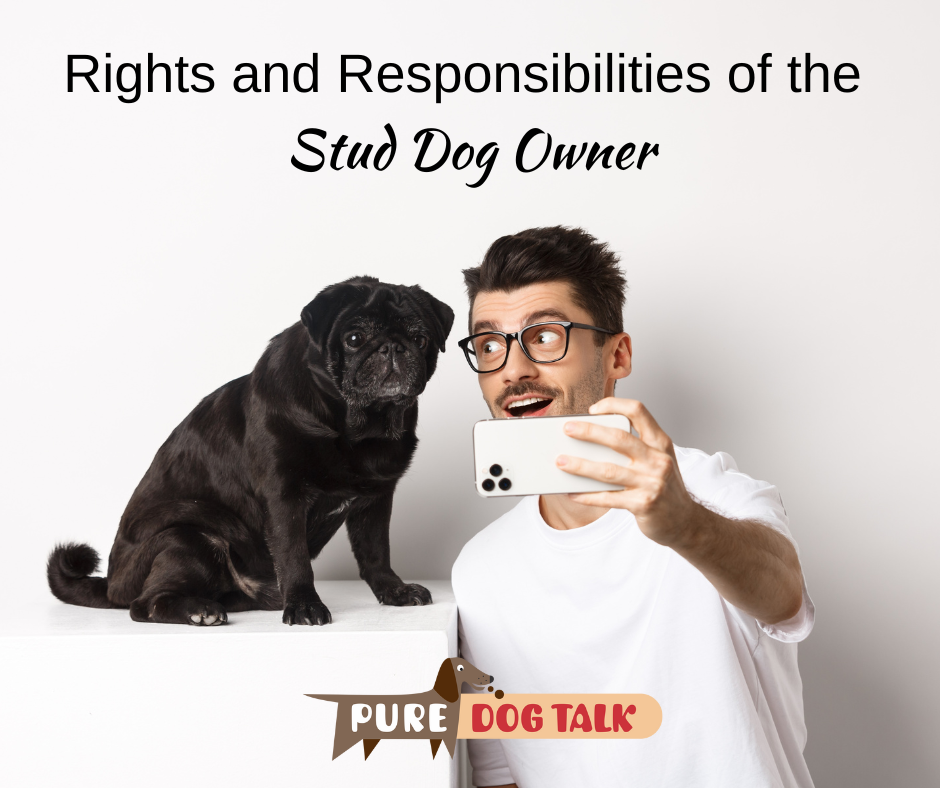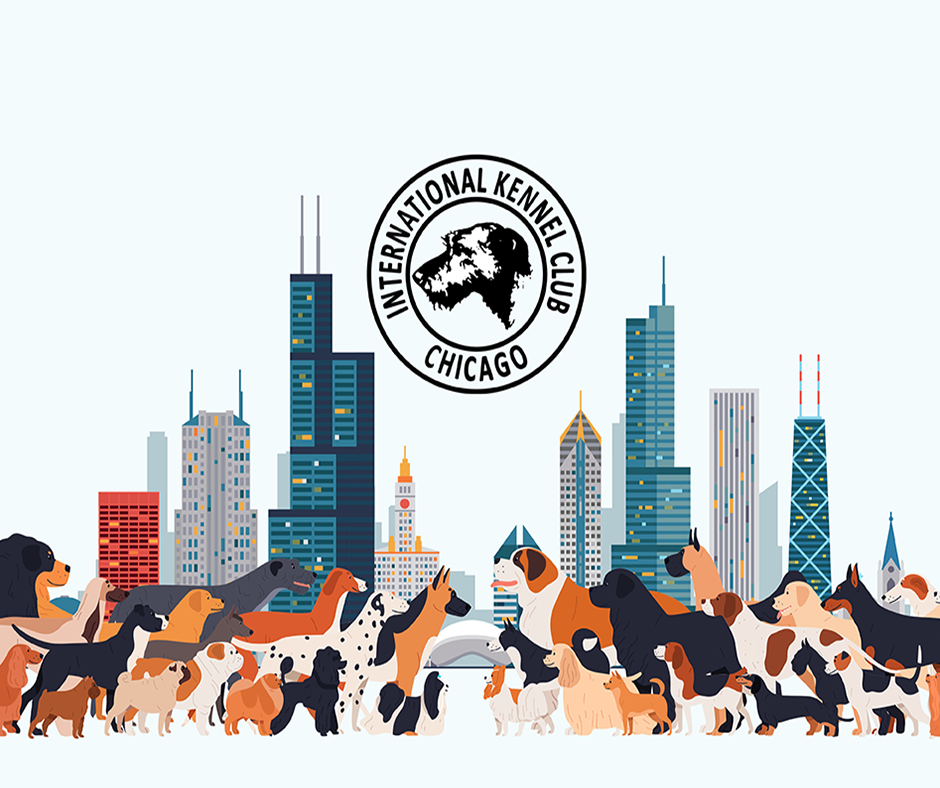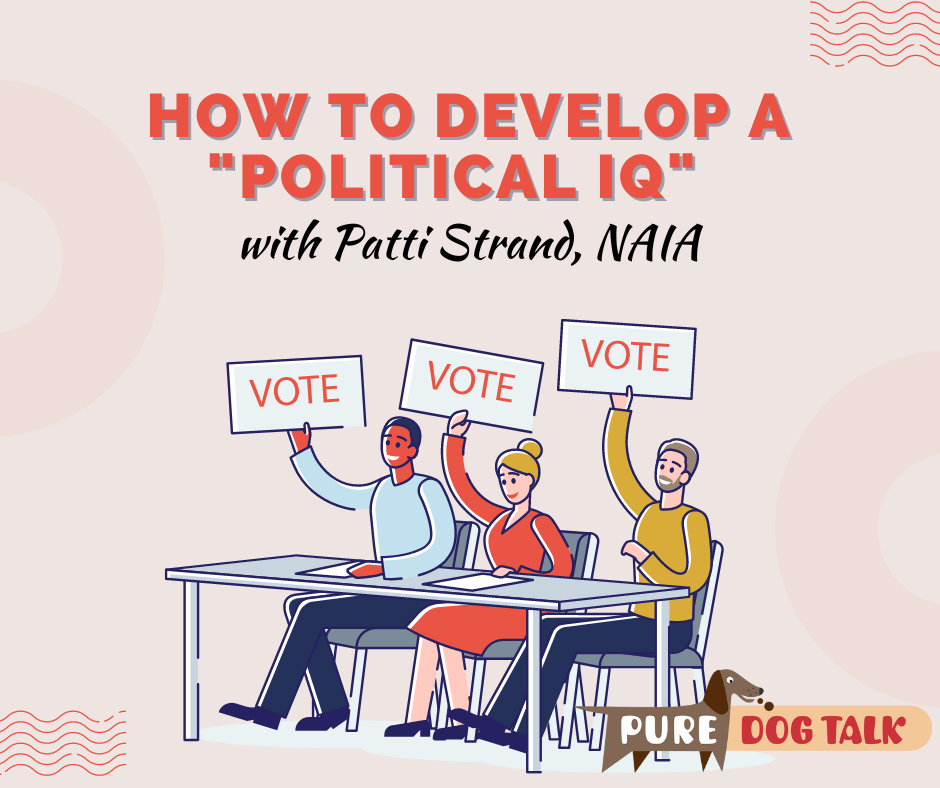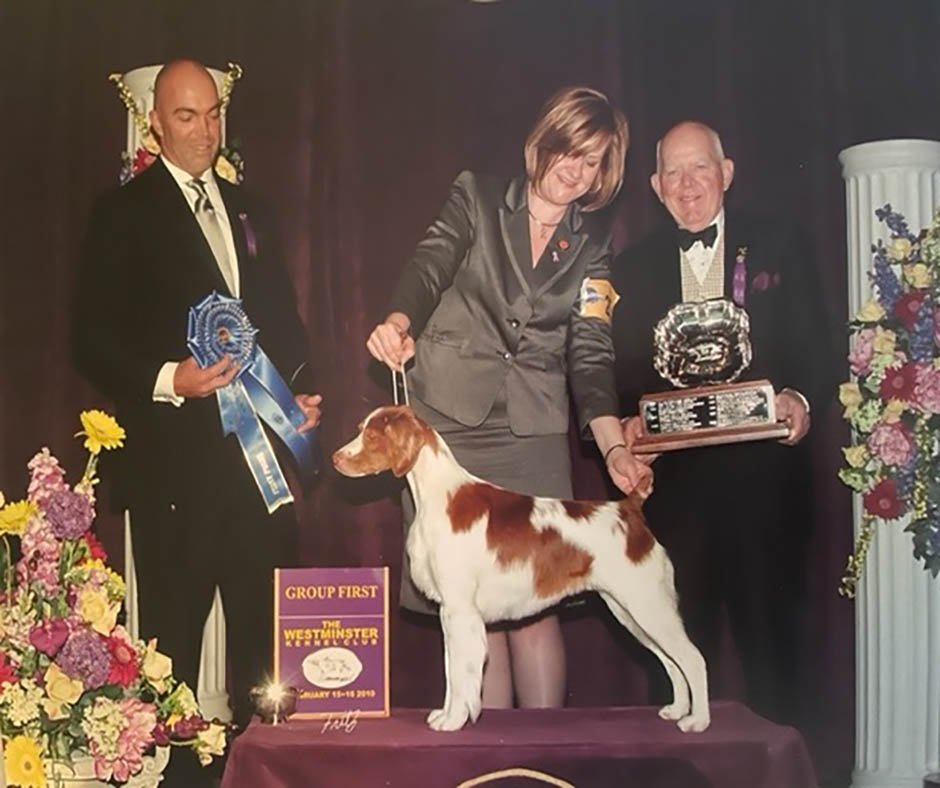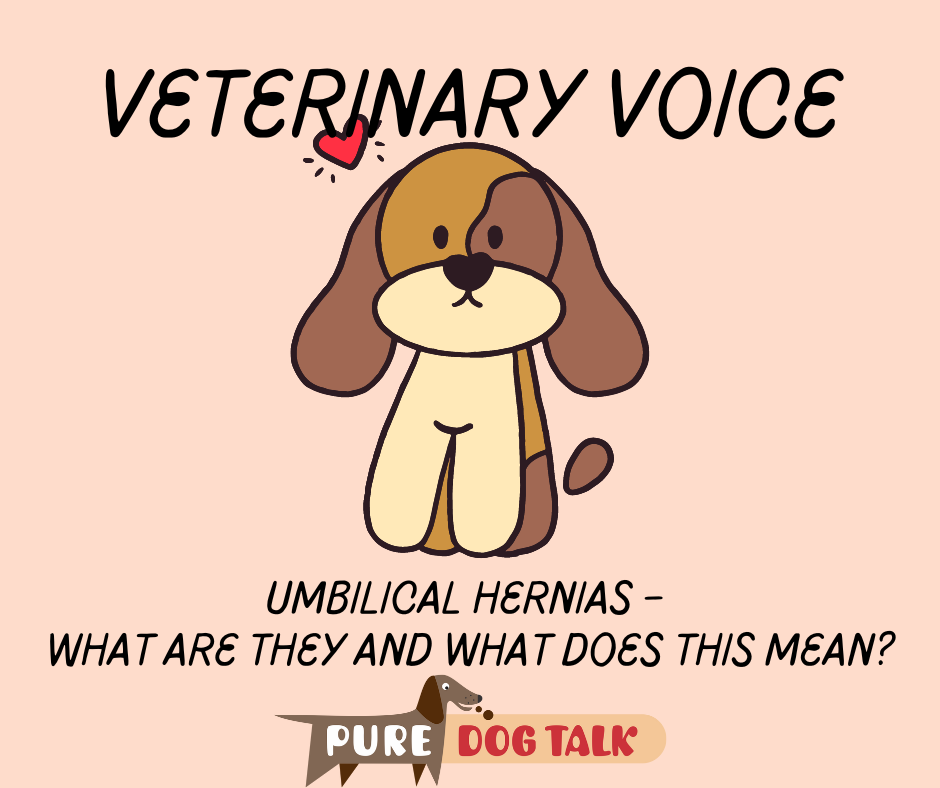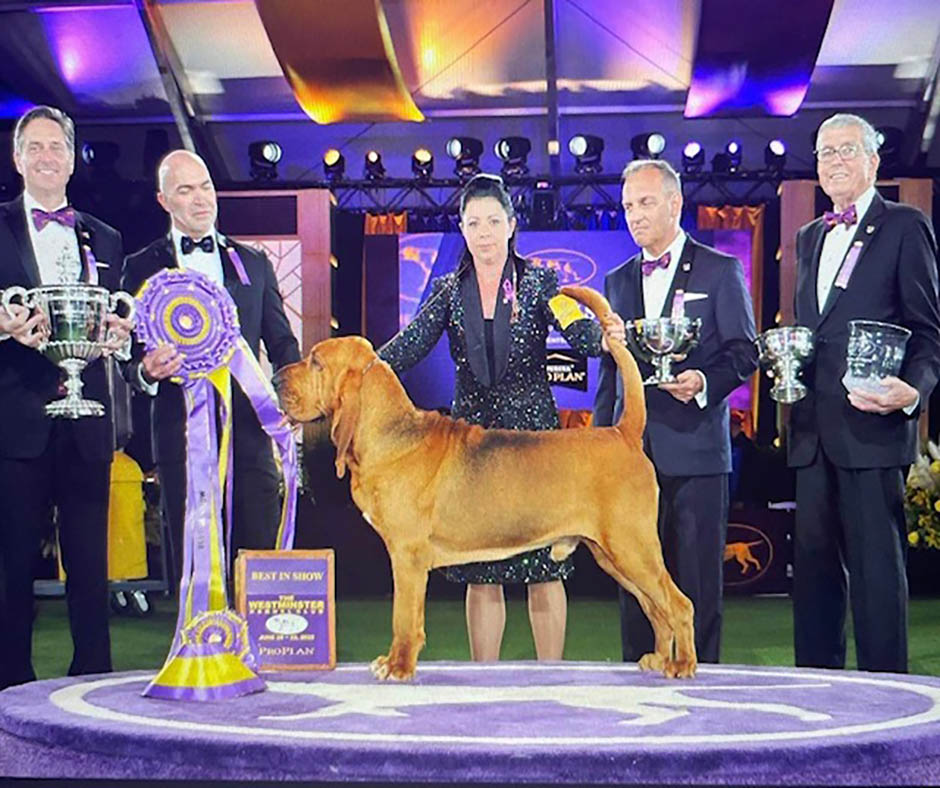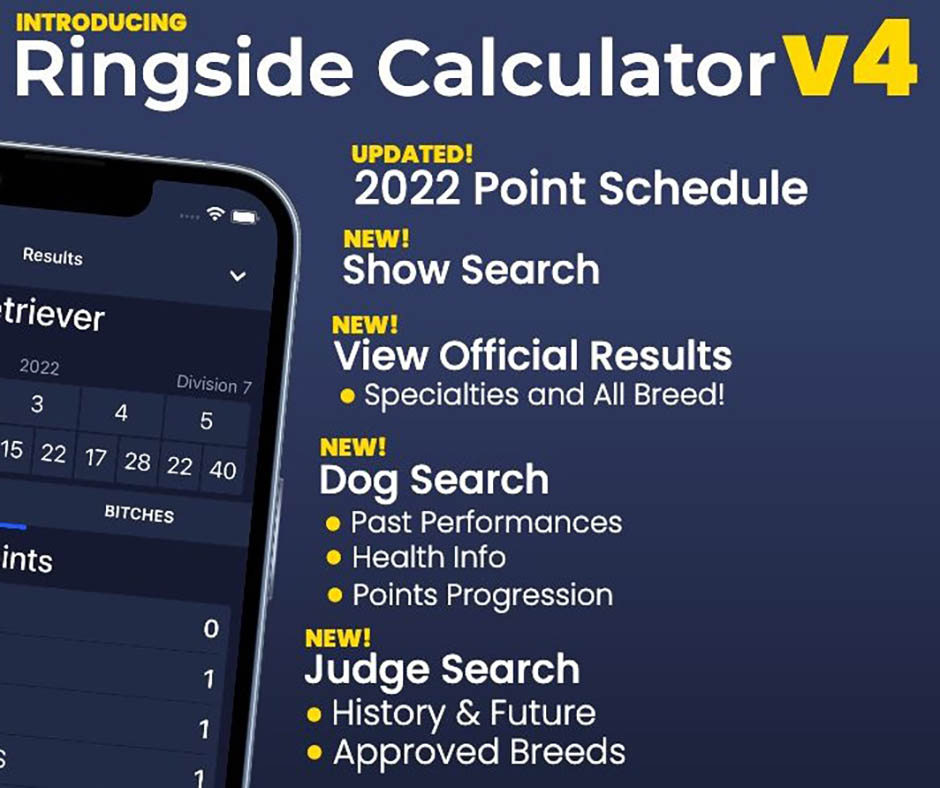Posts by Laura Reeves
547 – Canine Herpes Virus: Early Detection Saves Puppies
Canine Herpes Virus: Early Detection Saves Puppies
Alaskan Malamute breeder Wendy Corr joins host Laura Reeves to share her story of early detection of Canine Herpes Virus in her pregnant bitch and how she managed the situation to produce healthy puppies. This is the first of a two-part series which also includes an interview with Corr’s lead veterinarian.
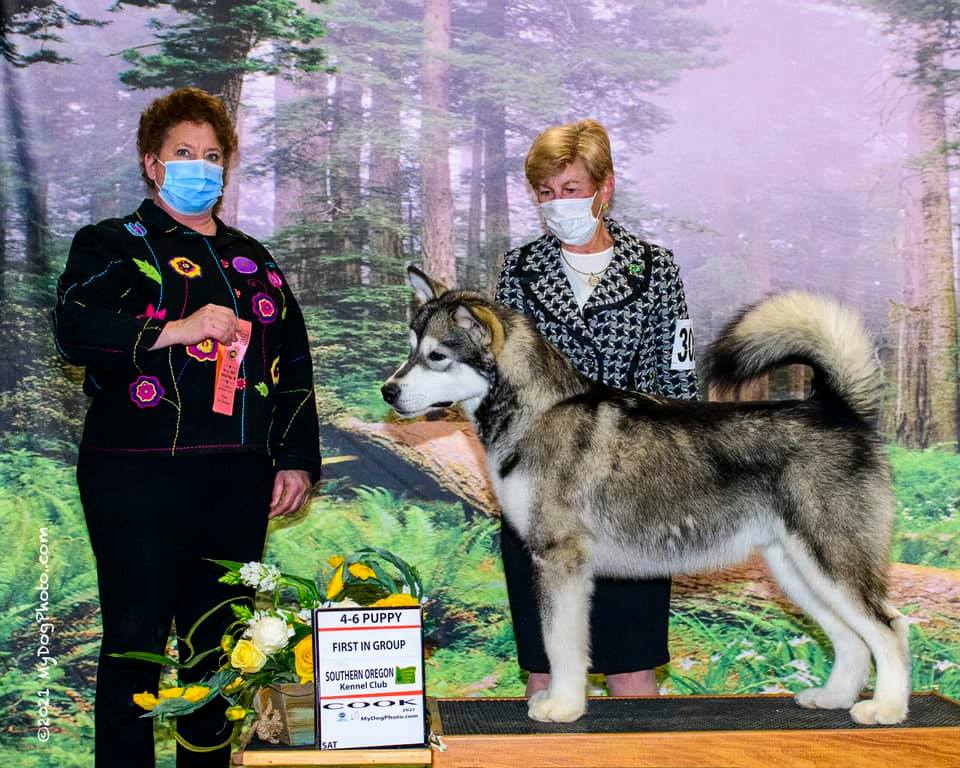
November 2021 4-6 Beginner Puppy. Later, breeder, owner, handler Wendy Corr related his story, told here.
Corr said she had never really thought about CHV much, as a long-time breeder, but had recently heard a presentation on the dangers of the disease to pregnant females. On a whim, she asked her veterinarian, Dr. Bruce Christensen, to pull blood a CHV titer test on her confirmed pregnant 3-year-old Malamute.
She was shocked to hear back a couple weeks later that the bitch had titer levels off the charts.
At the direction of Dr. Christensen and his team at Kokopelli Assisted Reproductive Canine Services in Sacramento, CA, Corr started her bitch on a course of acyclovir, a human anti-viral.
Corr, who is a clinical nurse in human medicine, said she was concerned about potential side effects from the drug, which could include cleft palate, but committed to the treatment with that understanding. She also opted for a C-section, rather than a vaginal whelp, in order to limit the puppies’ exposure to the virus in the dam’s body.
Primary among the handling of the four healthy puppies at birth (none with clefts) was incorporating an incubator to keep their body temperature above 99 degrees, the point at which the virus cannot replicate, for the first 2 ½ weeks. Putting the puppies on to nurse every two hours, monitoring temps and keeping mom and puppies content during that time was a daunting challenge, Corr said.
“We had friends who brought us dinner,” Corr said. “We had people who offered to come in and just sit with the dog so I could sleep or take a shower or we could go grocery shopping.”
The entire process took place during the height of COVID lockdowns, enhancing Corr’s challenges.
Stay tuned next week for insight from Dr. Christensen directly on his experience and recommendations on the topic.
546 – Consistency is the Key to Successful Dog Training
Consistency is the Key to Successful Dog Training
Trainer and author Shannon Riley-Coyner joins host Laura Reeves to talk about the key to successful dog training – consistency.
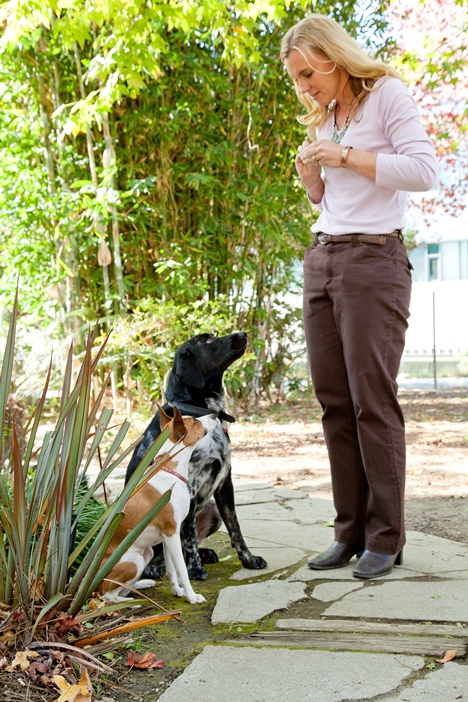 “Really, consistency is something that even as humans, we thrive on,” Riley-Coyner said. “Like if we have a relationship, whether it’s with our children, our spouse, our friends. Inconsistency really creates fear. It creates anxiety. It creates a lack of trust.”
“Really, consistency is something that even as humans, we thrive on,” Riley-Coyner said. “Like if we have a relationship, whether it’s with our children, our spouse, our friends. Inconsistency really creates fear. It creates anxiety. It creates a lack of trust.”
Five Ways to be Consistent
- Be clear about what you are expecting. Does down mean get off or lie down?
- Make a doggy dictionary. What is the word for each behavior?
- Be clear about reinforcement. Clicker? Food? Verbal? Be consistent with the reinforcer!
- Nail your timing. “A punishment that happens 3 seconds after a behavior can be very stressful for a dog. A reinforcement like treat that’s given three seconds after the behavior, it will be confusing. But it won’t be necessarily be stressful.”
- Consistent technique. “Inconsistency is very stressful for a lot of dogs. That’s why it’s so important to have that timing and your techniques be consistent.”
Clarity is kindness
“We need a way of communicating with (our dogs),” Riley-Coyner said. “If I don’t have some consistent words that mean something, we’re going to have a hard time communicating because dogs don’t talk in language like this. They talk with body language and we need to know about these things.”
Consistency for the dogs within the family is critical, Riley-Coyner said. Which is why using consistent words, rules and a similar tone should be part of the family meeting for any new dog.
“Tone will amp up a dog or bring a dog down,” Riley-Coyner said. “It’s a lot of training ourselves.” Consistency from the beginning and building a foundation, she added, enables us as trainers to show our dogs that “clarity is kindness.”
545 – Intussusception and Other GI Accidents
Intussusception and Other GI Accidents
Dr. Marty Greer, DVM is back with host Laura Reeves to discuss Intussusception and other GI related accidents that may affect our dogs.
“Intussusception is when the intestinal tract invaginates, or folds up on itself, so accordions on itself,” Greer said. “So, a piece of the intestine slips into another piece of the intestine, all aligned. And unfortunately, what happens when that occurs, is the blood flow is compromised to that part of the intestines and very quickly the dog gets into trouble.
“(They have) vomiting, diarrhea, they look really sick, really fast. So, it doesn’t look like your garden variety, ‘I ate grass and vomited’ or, you know, those kinds of things. It ranks up there in severity with parvovirus (and bloat). There’s a lot of different GI things, intestinal and stomach things that happen as intestinal accidents.
“So, it’s one of those intestinal accidents that happen. If intussusception happens, they’re almost always young puppies. They’re almost always associated with a heavy parasite load.
“Any parasite, usually roundworms, but any parasite, anything that can make the gut hyper motile. So, increase the motility of the activity of the gut to the point that it gets really angry and it just sucks in. It’s sort of like if you take off your sock and you kind of pull it wrong side out for part of it. That’s kind of how it looks. It has this double loop of intestines, so it’s usually because of hypermotility, although it can happen also with linear foreign bodies.
“A linear foreign body is something long and skinny that gets swallowed that shouldn’t be swallowed. It’s a non-food item, so it’s pantyhose, it’s string, it’s yarn, it’s balloon strings. Those long strands that come off of the rug. Those throw rugs, rope toys when they pull bits off the rope toy. So those are the things that tend to cause foreign body intestinal intussusception.
“Most of the time those dogs and cats end up in surgery because of the risk of intussusception or sawing effect of the long string foreign body kind of thing that just cuts through the intestinal wall. It can be pretty ugly.
“But intussusception is unique unto itself because it may or may not be related to a foreign body. It may look like parvo, ’cause, it’s a young dog, comes in acute abdomen, vomiting, anemic, sick. The real interesting thing is either you can feel it or there’s sort of a characteristic. look of how intussusception looks on ultrasound.
“So, if you have the suspicion of this, a good diagnostic tool is ultrasound. It’s much more effective than X-ray in making the diagnosis, but feeling it is oftentimes what we can do. I’ve seen this in puppies as young as six or seven weeks old, and those puppies are relatively easy to feel because they’re not very big and there’s not a lot of body fat.”
544 — Rights and Responsibilities of the Stud Dog Owner
Rights and Responsibilities of the Stud Dog Owner
Dale Martenson of Touche Japanese Chin joins host Laura Reeves for a deep dive on the rights and responsibilities of the stud dog owner. The two long-time breeders break down the top five considerations for owners to consider as they decide whether and with which females to breed their male dogs.
Compensation
Stud dog owners typically will choose to either receive a stud fee or the choice of a puppy from the resulting litter in lieu of a stud fee. The amount of the stud fee, timing of when it’s paid and choice of puppy are all items up for discussion amongst the parties, Martenson noted, but whatever is decided should *always* be put in writing in a contract.
Pick and Choose
Owners of popular stud dogs will be in a position to select the ideal mates for their dog. But that requires having specific criteria, knowing the broad background of the breed, the pedigree of both dogs, the health, temperament and potential disqualifying faults and, finally, the ethics of the breeder with whom they are doing business.
Popular Sire Syndrome
Knowing what the “bottlenecks” are in a breed are part of the stud dog owner’s responsibilities. Population genetics come in to play as stud dog owners balance a desire to see beneficial aspects of their dogs used to strengthen the breed with a question of when does that become “too much” and impact the long-term health of the breed as a whole.
Preservation Breeding
Within small gene pools and truly rare breeds, owners of stud dogs will often make different decisions about allowing their dog to be used than owners of more popular breeds. For breeds with these “gene puddles,” the implications of using or not using a particular stud dog carry significantly more weight simply due to the sheer numbers or lack therof.
Relationship Building
“Establish a relationship (with the stud dog owner),” Martenson said. “Because I think right now, breeding requires more of a relationship than it did before. I think that you have to have that. You’re just not going to take a phone call and someone comes by with a brucellosis test and breed their bitch and take their check. That’s just not today’s environment.”
543 – IKC “Phoenix Rising” Blends History into the Future
IKC “Phoenix Rising” Blends History into the Future
Scott Pfeil and Erika Wyatt join host Laura Reeves to share their excitement about the International Kennel Club of Chicago’s new shows.
IKC was a privately owned kennel club founded in the early 1900s. When the club’s owner, Lou Auslander, passed away in 2018, more than 100 years of tradition came to an end. Scott Pfeil and Erika Wyatt have taken on the challenge of resurrecting the “Phoenix from the ashes” and creating a new breed of dog show – embracing history while building the future.
 “I started when I was a kid showing dogs,” Pfeil said. “It was just the most iconic show to me. You know, there are very few really iconic shows. You always go to the Garden. It was some of those experiences, like Tuxedo Park. It was that emotion that got me. How do we bring something like that back? This was something that meant something to somebody.
“I started when I was a kid showing dogs,” Pfeil said. “It was just the most iconic show to me. You know, there are very few really iconic shows. You always go to the Garden. It was some of those experiences, like Tuxedo Park. It was that emotion that got me. How do we bring something like that back? This was something that meant something to somebody.
“Chicago is an amazing city and we’ve lost our Inner City shows, they just don’t exist anymore. And when (IKC) went away, to me, it was heartbreaking. (The show) was exciting because the people were excited. The energy in the room was like, you couldn’t believe it. And simply, that’s why. It’s that excitement. That is why we’re putting our asses on the line here, just to make sure that we can bring something like this back to one of the greatest cities in the world, as far as I’m concerned.”
 “It will not be benched,” Wyatt said. “The dates of the show will be Aug. 25-27, 2023 at McCormick Place. We looked really hard at (benching). Historically this has been a huge spectator show. Throngs of families from Chicago come through this show. We wanted an opportunity for the public to become educated, be able to actually see breeds of dogs, put their hands on breeds, learn about breeds and we didn’t think that in today’s climate that benching was the best avenue for that.
“It will not be benched,” Wyatt said. “The dates of the show will be Aug. 25-27, 2023 at McCormick Place. We looked really hard at (benching). Historically this has been a huge spectator show. Throngs of families from Chicago come through this show. We wanted an opportunity for the public to become educated, be able to actually see breeds of dogs, put their hands on breeds, learn about breeds and we didn’t think that in today’s climate that benching was the best avenue for that.
Meet the Breeds
“So instead, we are partnering with AKC and we’re holding a full-blown Meet the Breeds within the show. I think this will keep the show dogs that have just been groomed and their handlers not being interfered with. And it will give the public the opportunity to come and see dogs, get information and learn about purpose-bred dogs. It will be a better experience for both exhibitors and spectators.
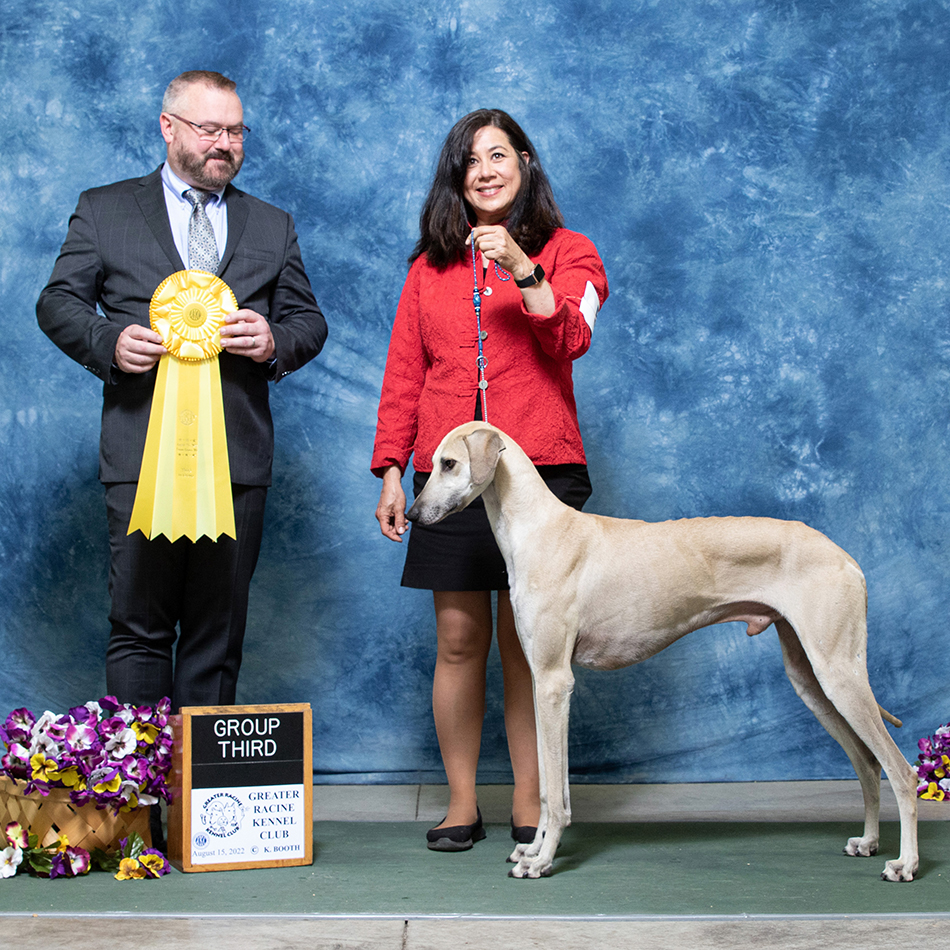 “We wanted to do something with an open show because we want to give people with foundation stock service and miscellaneous class breeds the same opulent stage that the recognized breeds get.
“We wanted to do something with an open show because we want to give people with foundation stock service and miscellaneous class breeds the same opulent stage that the recognized breeds get.
“We wanted to do something to recognize owner handlers because there are so many owner handlers out there, and owner handlers deserve to be recognized for the fabulous contribution that they make this sport. And we wanted to have a special award to recognize a special dog in Chicago at the Chicago show.”
Chicago Challenge Cup
Winner of the Chicago Challenge Cup will receive $20,000, with an additional $5,000 donated to a charity of their choice.
“How do I know I’ve put on a great show?” Scott asked, “When all the great dogs are there.
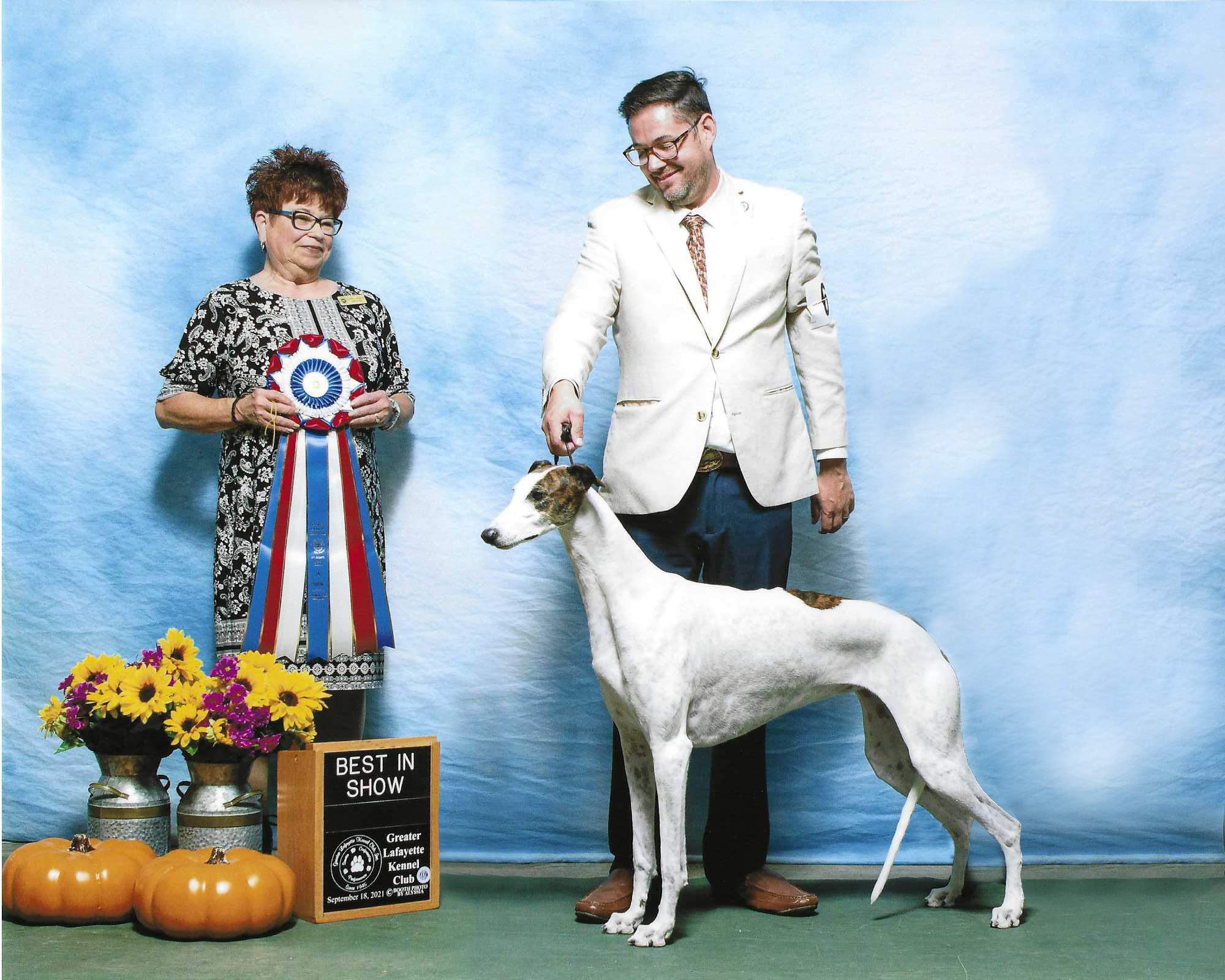 “How do we do that and how do we bring them together? I think this competition really allows that to happen. In a nutshell, it’s all of the winners of the FSS group, of the Miscellaneous group, of the owner handled groups and of the regular groups over the three days in Schaumburg (IKC’s January show in Schaumburg, IL). So, if you win any of those groups, on any of those three days, you’re going to get a certificate that’s going to invite you to participate in the semifinals of the Chicago Challenge Cup.
“How do we do that and how do we bring them together? I think this competition really allows that to happen. In a nutshell, it’s all of the winners of the FSS group, of the Miscellaneous group, of the owner handled groups and of the regular groups over the three days in Schaumburg (IKC’s January show in Schaumburg, IL). So, if you win any of those groups, on any of those three days, you’re going to get a certificate that’s going to invite you to participate in the semifinals of the Chicago Challenge Cup.
“Canine Chronicle is partnering with us to also invite the top 10 dogs in each regular group for the first half of the year.”
542 — How To Develop a “Political IQ” with Patti Strand
How to Develop a “Political IQ” with Patti Strand
Patti Strand, founder of National Animal Interest Alliance, has spent 30 years working within the political system to advocate for dog breeders and owners. She joins host Laura Reeves to discuss how to develop YOUR political IQ.
Get Involved
“At the very beginning you said that you think we need to be involved,” Strand said. “And I just could not agree more. There’s a bunch of old sayings, one is that we all wind up with the government we deserve.
“I do not have a negative idea about politics overall or I couldn’t participate in this. I have to stay open-minded and I consider the possibility that some of the people who are there, and it’s true, some of the people I’ve met are very sincere. They care very deeply. But they have not heard from us, is the big problem.
“In the 30 years that I’ve been involved, I would say that there is greater involvement now and by quite a bit than there was before. But that means like going from zero to something like 20 percent. I’m serious. Our community, they pretty much get engaged when there’s a crisis, when the wolf is at the door…
“It is kind of an art form for people to get involved. The first step to getting involved is deciding that you’re going to. Right now, because it’s an election season, is the time to make that commitment.
Get Access
“The biggest thing, though, is to figure out how to get access. Because usually when we’re facing legislation, most of the people in our group don’t know anybody, and they don’t know anybody because they haven’t taken advantage of moments like now, which is an election season. There are all kinds of opportunities right now to become involved, get to know a few people. It’s about voting. It’s about actually being involved with process.
“But right now, while you have an election season, there are a number of different ways that people can get involved. If you see somebody’s campaign that’s interesting to you, you can go to their website, you can, you know, study them a little more. Study a lot of different politicians and not just at the state level or federal level. But also the local level, your city council, your county commissions. Look at all of those candidates and do some sleuthing. Educate yourself, develop a political IQ.
“I think volunteering is really important. Once you get involved, voting is the obvious biggie as far as being involved is concerned. But volunteering and donating also gets you access, and that’s what we’re after in politics, the ability to talk to people. When an issue comes up and have your name be recognized so that you’re not just a total stranger to them. They have some idea of who you are and what you stand for, and volunteering is a really good way to do that.
“After you’ve done your due diligence and figured out who you think might be a good person to represent you, go to their website. They’ll tell you what they need and everybody has a few minutes that they can spend a week on helping. Now you can do something as simple as promising to deliver 10 yard signs or to deliver bumper stickers to a group that you’re involved with, some kind of way that you can get the word out that you support them and they can get the materials into a lot of people’s hands.
Get Representation
“You really need to know who’s representing you. If you don’t know who’s representing you, they’re probably representing somebody else. And that’s, of course the big issue that we had when I first got involved.
“The Big National Fundraising groups that promote so-called humane ideas, usually that have no subject matter expertise, they’re just philosophers with a bank account, that was who had educated everybody I talked to. They were there, they were involved, they were in the ring, they were donating money, volunteering for campaigns and they were telling the politicians what they should think about animal issues.
“So, if you’re not there not at the table, somebody else will take your place and it’s just absolutely where we are today.”
541 – Dr. Donald Sturz on Building Community and Continuing Education
Dr. Donald Sturz on Building Community and Continuing Education
Don Sturz, psychologist by day, dog show judge on the weekend, provides insight on safe space at the dog show and the importance of continual learning.
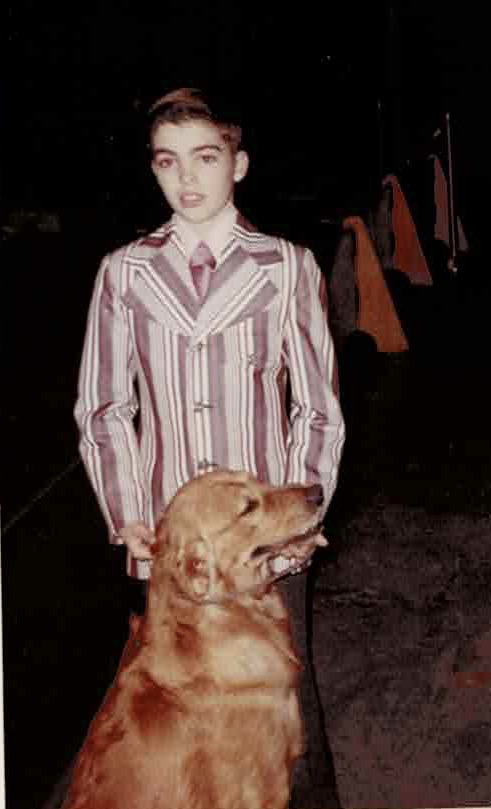
Dr. Donal Sturz’ first time at Westminster Kennel Club when he was 10 years old.
Sturz has discussed being bullied as a child at school and finding dogs and dog shows a “safe space.” He shared his insights on how to make dog shows more welcoming for all exhibitors.
“That’s something that depends on individuals being able to choose situations that are safe,” Sturz said. “People go into situations without full knowledge and wind up in situations that are toxic. It’s up to each individual to know what is their safe space.
“I also think clubs should view the dog show as more of a community event, more than just a dog show. Not just the dog show community, but also the community around it. How do we help people have a good time here.
“(At) Westminster (Sturz is the AKC delegate for Westminster Kennel Club) the club members think a lot about the exhibitors, what makes it pleasant for them. Clubs should be thinking in terms of the human aspect of this. When the atmosphere is devoid of connection and positivity, the activity itself can get really intense. People’s emotions can run high. If you proactively set a tone or atmosphere that is more celebratory, it helps balance that out a little bit.
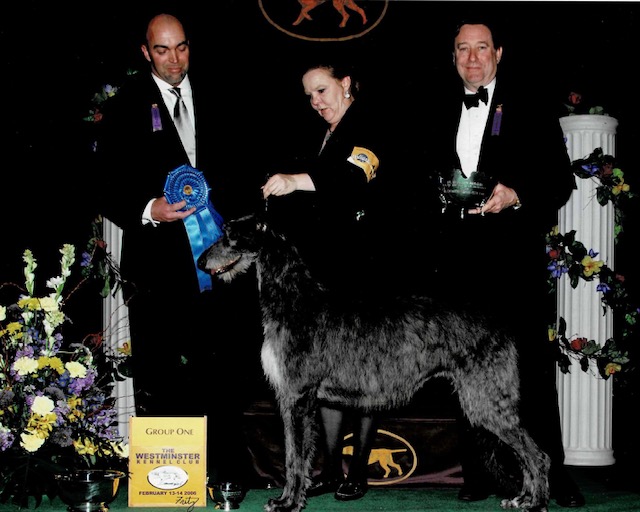
Donald Sturz judging Westminster Kennel Club Hound Group in 2006.
“People get jaded, lost in the fog of yesteryear. If you have the relationship, you can help provide a reality check. These can be meaningful conversations, if you have them with the right tone. It’s more inquiry, not confrontation.
“I do think one area that is different now, I think people hung around more (in years past). People’s lives are busy now. It diminishes the dog show experience (because they don’t have time to) watch and sit. People could do more of that. Watching other breeds, having conversations with people from other breeds.
“Also, listening. A lot of people like to talk, not a lot of people like to listen. Listening is much more valuable than feeling the need to weigh in.”
Sturz described a recent experience attending the Pekingese national, “not even about judging, just a breed that fascinates me. I was like a kid going off to the first day of school.”
The experience “impacted how I judged. My brain was worked up and tuned in.”
Sturz offered his three best tips for how to learn at dog shows.
- Know who to learn from. This is key. Seek out individuals you don’t have a natural connection to.
- Be clear on the purpose. What are you seeking, what do you want to get?
- Know yourself as a learner and how you learn.
540 — Dr. Marty Greer’s Deep Dive on Umbilical Hernias
Umbilical Hernias – What are they and what does this mean?
Dr. Marty Greer, DVM shares a deep dive into the question of hernias, different types, and whether dogs with hernias should be included in breeding programs.
By Dr. Marty Greer, DVM
An umbilical hernia is a weakness or opening in the muscle wall of the abdomen where the umbilical blood vessels pass prior to birth. Frequently abdominal fat is in the hernia but the skin is intact across the hernia, so there are no exposed abdominal organs. The fat may be omentum or part of the falciform ligament.
There are several disorders seen in mammals that are similar to an umbilical hernia and may add confusion to the discussion.
Other types of hernias
Gastroschisis is when a puppy’s intestines protrude outside abdomen through an opening off to the right side of the belly button/umbilicus with a bridge of skin between the umbilicus and defect. The intestines and abdominal contents are not covered by a protective membrane. Because the intestines are not covered by a sac, they can be damaged by exposure to amniotic fluid in utero, which causes inflammation and irritation of the intestine. This can result in complications such as problems with movements of the intestines, scar tissue, and intestinal obstruction. It is also difficult to keep the intestines and other organs sterile, moist, contained, and undamaged during birth and handling shortly after birth.
Omphalocele occurs when the newborn pup’s intestines, liver or other organs protrude outside the abdomen though the umbilicus. Embryologically, as the puppy develops during the first trimmest of pregnancy, the intestines get longer and push out from the belly into the umbilical cord. The intestines normally go back into the belly. If this does not happen, an omphalocele occurs. The omphalocele can be small, with only some of the intestines outside of the belly, or it can be large, with many organs outside of the belly.
In this situation, the organs are covered with a thin, transparent sac of peritoneal tissue. There are often other associated birth defects including heart and kidney defects. Additionally, the abdominal cavity may not be large enough to accommodate the organs when replacing them surgically. In humans, it is associated with heart and neural tube defects as well as other genetic syndromes. An omphalocele is worse than gastroschisis – it has more associated anomalies and a higher rate of mortality than gastroschisis.
When a puppy is born with intestines exposed, whether an omphalocele or gastroschisis, immediate surgery is necessary. If the pup is born at the veterinary hospital, there is a better chance of successful interventional surgery. However, despite the best efforts of the veterinary team, some pups cannot or should not be saved. Surgery includes protecting the organs while transporting and preparing for surgery, keeping more intestines from pushing out of the abdominal cavity while handling, keeping the intestines sterile, and protected from damage, anesthesia of the newborn pup, enlarging the abdominal wall defect to reposition organs into the abdominal cavity, appropriate suture techniques, post op antibiotics, and post op pain medications.
For most pups born at home, this cannot be accomplished. For some pups born by c-section, this can be accomplished with quick thinking veterinary team members, a skilled surgeon, owners willing to put forth the money and effort, no additional genetic disorders, and a lot of luck.
Other hernias seen in humans and animals include inguinal hernias (in the groin region), diaphragmatic hernias, peritoneal-pericardia diaphragmatic hernias (PPHD) and traumatic hernias anywhere on the body cavity. Inguinal hernias are second to umbilical hernias in frequency. An open thoracic wall rarely occurs. In this case, the pup can rarely be saved as there is usually inadequate chest wall (ribs and skin) to close. Additionally, surgical intervention is too slow to keep the pup breathing during intervention.
Other midline defects also include cleft palate, cleft lip, open thoracic wall, open fontanelle and spina bifida.
Back to umbilical hernias
It is generally considered that umbilical hernias have a genetic basis. Despite the wish that umbilical hernias are caused by trauma to the umbilical stump at birth, this is rarely the case. Veterinary staff is very careful to tie and handle umbilical cords carefully. Even when a bitch is aggressive while chewing the cords, they do not result in hernias.
There are some veterinary experts who recommend avoiding breeding all dogs umbilical hernias, stating that these dogs when bred will have progressive severity, resulting in gastroschisis and omphalocele. Other veterinary experts do not believe this is the case.
Should you allow a dog with an umbilical hernia to be used in a breeding program? That depends on several factors.
There is no perfect dog. In my opinion, we need to rate genetic and congenital disorders based on severity. I rate disorders on a scale of one through three. To me, level one is a minor disorder that is easy to live with or easy to correct. This includes umbilical hernias, distichia (extra eyelashes), entropion (rolled in eyelids), and retained testicle(s).
Level two are disorders requiring long-term management but that are not life-threatening or life-altering. This includes hypothyroidism, anxiety, and allergies. These require life-long medication and management but other than the associated costs, do not seriously impact the dog’s quality or quantity of life.
Level three includes life-threatening, life-altering, or life-shortening disorders. This includes bad temperament, seizures, orthopedic disorders (hip dysplasia, elbow dysplasia, cruciate disease) and at some point cancers (when we can DNA test for these). These cancers will include lymphosarcoma, malignant histiocytosis, hemangiosarcoma, and osteosarcoma. Many people make excuses for bad temperament, but when a dog is a threat to humans, I am of the opinion that these dogs should never be in a breeding program.
The biggest problem with the level one disorders are that veterinarians and breeders can detect these at an early age. As a result, these pups are booted out of a breeding program before other disorders can be detected and eliminated. In many cases, by the time level two and three disorders are found in a dog or line of dogs, it is too late – they have already produced pups. Once we have better DNA tests, we can do a better job of eliminating some of these disorders.
Another concern many veterinarians have is the risk of abdominal organ strangulation and/or entrapment if the umbilical hernia is left unmanaged surgically. According to the unpublished literature, this condition is rare and is easily managed if it becomes a concern. The AKC and AVMA allow and encourage the surgical correction of umbilical hernias should this be medically indicated.
If a pup or pups are produced that do have umbilical hernias, the recommendation is to correct them surgically if they don’t close on their own (many do) and at the time of spaying or neutering if they don’t close.
In summary, umbilical hernias are genetic disorders in most breeds and most cases. However, they can easily be corrected surgically if indicated. It is exceptionally rare to need to use mesh or other complex surgical techniques to close the vast majority of umbilical hernias. This single genetic condition should not be a reason to eliminate mildly affected dogs from a breeding program if the dog has other qualities that merit the inclusion in a program.
539 – Dr. Donald Sturz, Dog Show Philosopher & WKC BIS Judge
Dr. Donald Sturz, Dog Show Philosopher & WKC BIS Judge
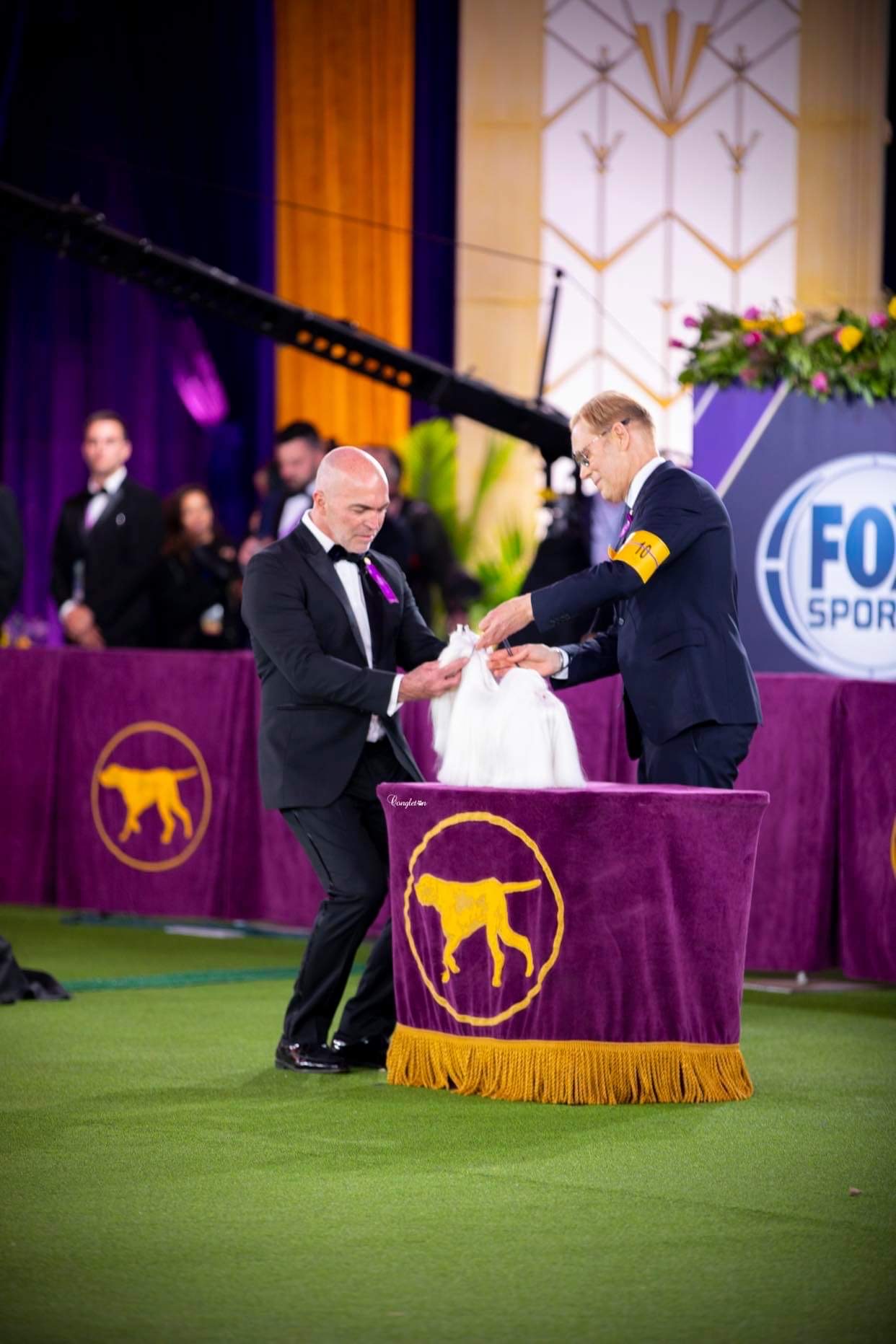 Dr. Donald Sturz, 2022 BIS judge at Westminster Kennel Club, joins host Laura Reeves to talk purebred dogs as history and art. And goosebumps at seven contenders in a unique and powerful lineup.
Dr. Donald Sturz, 2022 BIS judge at Westminster Kennel Club, joins host Laura Reeves to talk purebred dogs as history and art. And goosebumps at seven contenders in a unique and powerful lineup.
“From a historical perspective,” Sturz said, “I think it’s so important that we keep our focus on the history of particular breeds, not just from the point of view of the climate or where they came from, the terrain that they worked on or jobs that would to do, but also how the breed has evolved over time and understanding the difference between the evolution of a breed versus the changing of a breed.
“I think those are two very different things and so I think having a historical perspective, I was gonna say as a judge, but also as a breeder, I think that that informs your decisions, it informs your perception of the dogs that you’re looking at when you put them in that historical context of both where they originated, but what they were meant to do and how they’ve evolved over time.
Purebred dogs are history and they are art
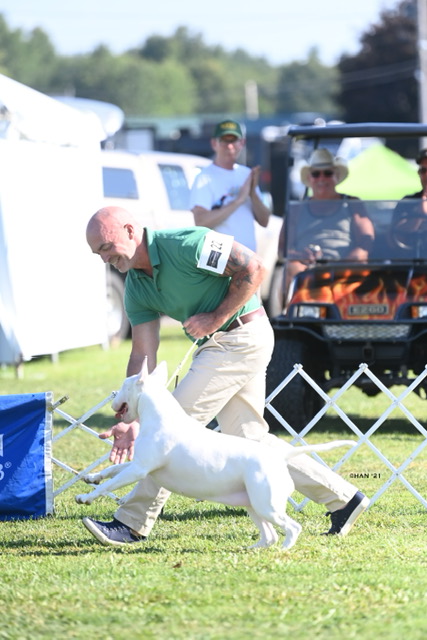 “When you talk about dogs as art, that really resonates with me, because that’s what it’s like to me when I go to a dog show. I look at dogs as I would look at art in a museum. I love when something moves me. You know how when you look at a beautiful piece of art, whether it’s a painting or sculpture or whatever, and you just have a visceral emotional reaction. I love when that happens for me with a dog. As a judge it doesn’t happen all the time, it doesn’t happen as frequently as one might like, but when it does happen, it’s kind of like the reinforcer.
“When you talk about dogs as art, that really resonates with me, because that’s what it’s like to me when I go to a dog show. I look at dogs as I would look at art in a museum. I love when something moves me. You know how when you look at a beautiful piece of art, whether it’s a painting or sculpture or whatever, and you just have a visceral emotional reaction. I love when that happens for me with a dog. As a judge it doesn’t happen all the time, it doesn’t happen as frequently as one might like, but when it does happen, it’s kind of like the reinforcer.
Patience is a virtue
“People have gotten so caught up in immediate gratification and looking for the outcome rather than the process. I think it’s important for us, especially in dogs, to kind of catch ourselves. If we find ourselves in that kind of moment, I’ll say wait a minute, slowdown skippy, you know there’s a bigger picture and a much longer story and you need to keep reminding yourself of that.
“I’m big on there being gray areas. I can allow for some stylistic differences on the continuum. But there’s a point, there’s a line where you get, that’s too much, that’s too far. It’s either too moderate or too extreme. I have a little wiggle room on both sides of that, so that’s how I would process kind of that global perspective piece.
“Being able to kind of see the forest for the trees and be able to, as a breeder, see how that dog can add to your journey as you pursue your vision of the breed. I think also being able to think in a more long-term way.
“I think the mistake, unfortunately, is people are like ‘oh, I’m gonna breed to this dog from wherever and I’m gonna bring in these qualities’ and then they have a litter and it’s like ‘oh I didn’t get what I wanted.’ You’re probably not gonna get what you want. You have to keep working and building and choosing and selecting. It’s a longer term process when one tries to do something like that. Does it sometimes click? Yeah, it sometimes happens. But I think that’s unusual. You have to kind of make a commitment to a few generations out, at least, to see what you were trying to get to.
Deciding in the moment
“What was so beautiful was that his breeder owner handler just very calmly stepped out there and guided him very deftly into a natural stance. He just planted his four feet perfectly without any the crossover thing … it was just boom boom boom. And then he just stood there and he literally stared at me. I’m like ‘Oh my God this is a really proud dog. This is a dog who’s giving me a dog standing over a lot of ground, a dog of power and strength. And then I sent him around and his gait was just flawless… Powerful and covering ground and elasticity. Head and tail carriage… and it was perfection to me. In that moment, it was like ‘there it is.’”
538 – Ringside Calculator Brings Technology to the Dog Show
Ringside Calculator Brings Technology to the Dog Show
Exhibitor and amateur ap developer Ben Reynolds joins host Laura Reeves to introduce his dog show application, called Ringside Calculator.
Reynolds went to his first dog show when he started dating his wife. He was hooked and eventually acquired his Golden Retriever to show.
“If I wanted to win, I wouldn’t have started with a Golden Retriever,” Reynolds noted. “But I got to meet a lot of cool people. It’s pretty intimidating, but the cool thing is every ring there’s always a winner and there’s always a loser. When I lost, I didn’t feel bad. I had fun.
“As I was researching into dog shows, the information is sparse and someone who wasn’t raised in it, you don’t really know what’s going on and then the whole point system was really confusing.”
Reynolds, an engineer by training, used the COVID lockdown to build an algorithm for counting points on a mobile ap with an up-to-date point schedule. Over the last couple years, he’s integrated new features including grand champion points, dog profile, points progression, judge search, show searches and more.
“I didn’t change the world here with this information,” Reynolds noted, “The information is available. It’s just not that accessible. But the ap is much more user and mobile friendly.
“I’ve also collected every single conformation show result for the last five years. You can click “view results” and all the results for your dog will pop up.”
Available on both iPhone and Android platforms, upcoming features will include a section for notes on dogs, judges, show sites; searching multiple breeds; competitor reports; personal judging schedules and more.
Reynolds is actively seeking user input for new features.
“Try to abuse it! Break the ap,” Reynolds said. “Tell me how you broke it. I’ll fix it. I haven’t had too many issues, but I want to hear your feedback. There will be a free trial available. There’s a lot of people out there who know more than I do about dog shows. That’s why I want the feedback.”
Reach Reynolds at ringsidecalculator@gmail.com with input or questions.

